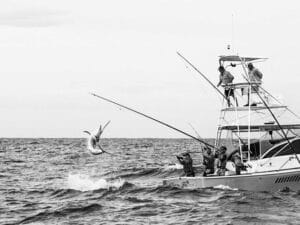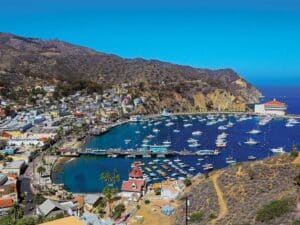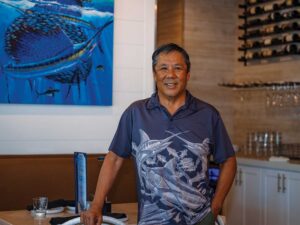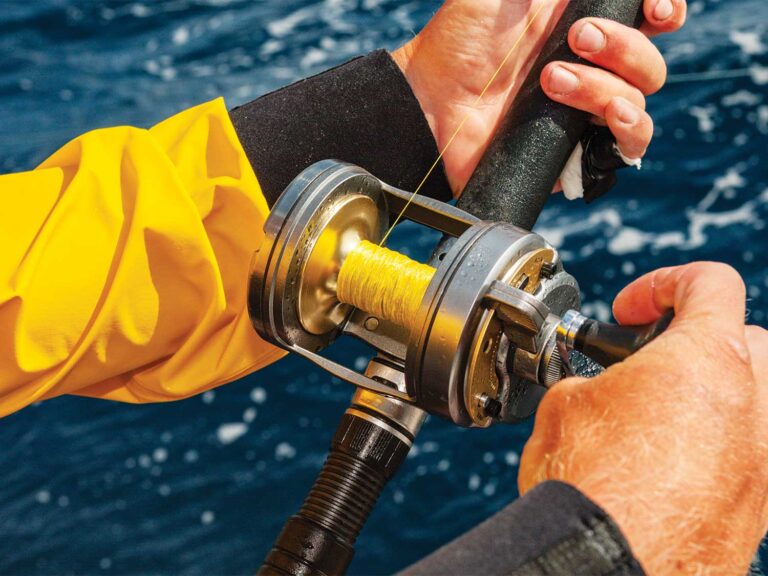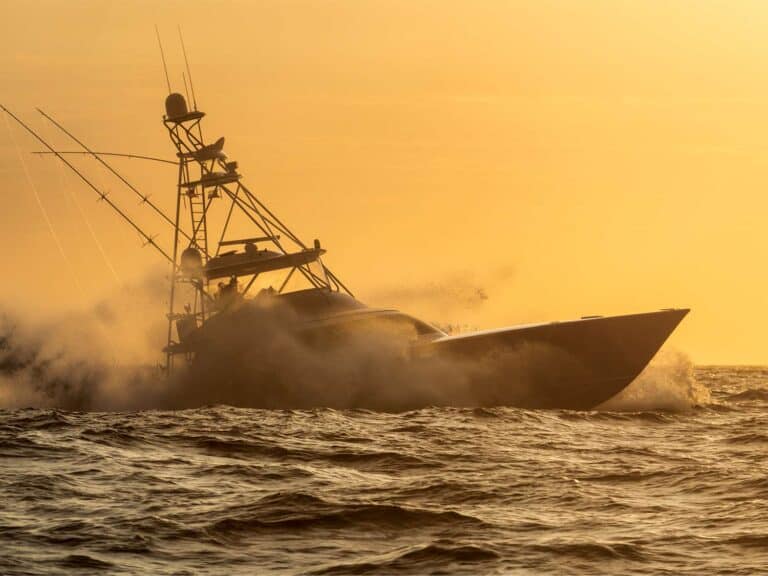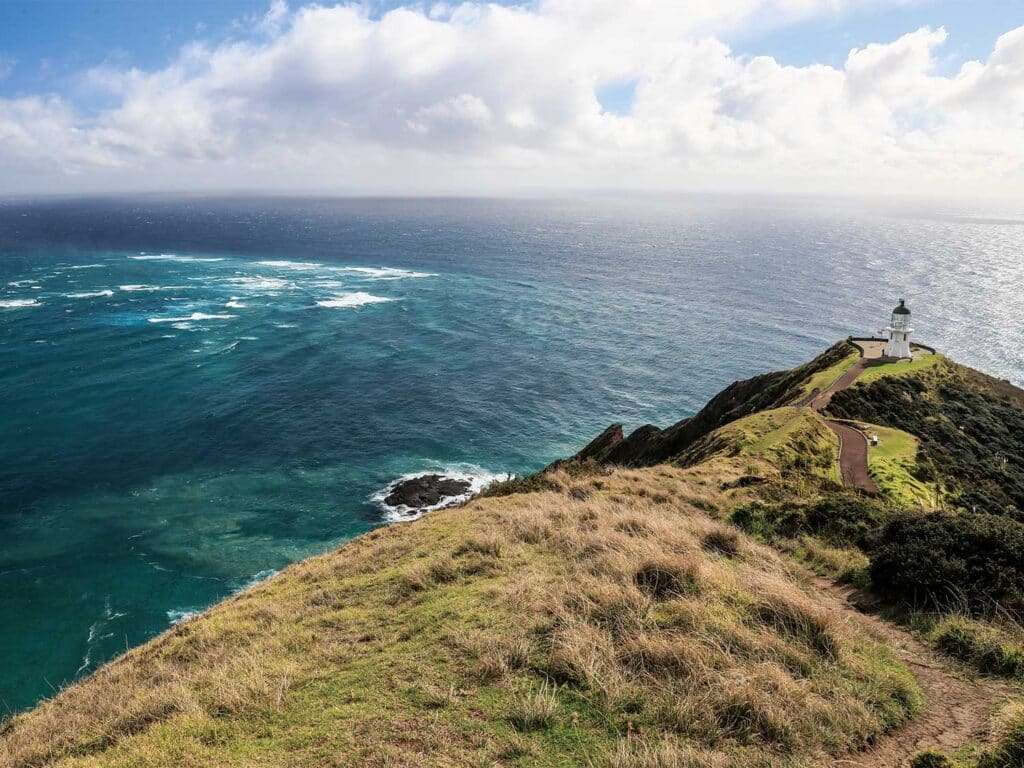
Subscribe to Marlin magazine and get a year of highly collectible, keepsake editions – plus access to the digital edition and archives. Sign up for the free Marlin email newsletter.
The geographic isolation of New Zealand didn’t really hit me until about seven hours after wheels up from LAX. I’d already watched two in-flight movies back-to-back and figured I’d check the flight tracker to see where we were, even though we were only halfway through the flight. Big mistake. The screen lit up with nothing but ocean and one lonely plane icon drifting across the Pacific like a single ant on a blue dinner plate. That was enough of that.
On a flight like this, sleep isn’t an option for me. It would be easy to blame the tiny seats or snoring passengers, but the reality is I was just too damn excited. New Zealand had been at the very top of my bucket list for as long as I could remember. By the time we touched down in Auckland, I was in a functional trance, with my body running on adrenaline, Zyn pouches and coffee. I met up with my host, Gary Carter, after grabbing my bags. I’ve known Gary for 15 years. We’ve chased records together from Costa Rica to Argentina, and worked together during my time at the IGFA. At 78, he’s in great shape, and a light-tackle lunatic with an insatiable appetite for adventure.
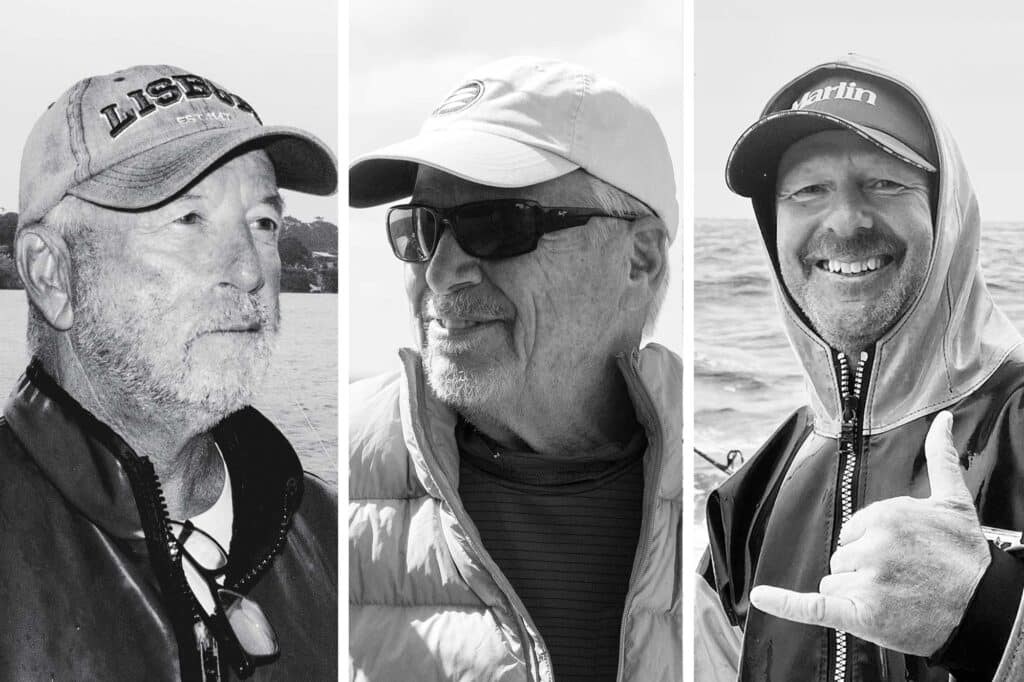
The last thing I wanted to do at that point was board another aircraft, but that’s what was on the itinerary. We caught a twin-prop puddle jumper for a 50-minute hop over the North Island. From 10,000 feet, New Zealand unfolded below us—rolling green hills, jagged cliffs and isolated coves that looked like they’d been pulled from Tolkien’s notebook. I pressed my forehead to the window, eyes burning, brain fogged, trying to do the math on how long I’d been awake. Thirty hours? Maybe more. Then my mind shifted to Zane Grey, who once roamed these same coastlines in pursuit of striped marlin a century ago. It probably took him 30 days to get here by sea. So what’s 30 hours? A quick vision of a David Goggins meme snapped me back to my senses.
When we landed, our star-studded crew consisting of Capt. John Batterton (JB) and Brad Fergus were waiting for us on the tarmac. We shook hands, swapped nods and got moving. The mission was on.
Let me address something quickly for the sake of word count: I could fill this entire piece talking about how jaw-dropping the natural beauty of New Zealand is. The place is otherworldly. Every bend in the road looks like a screen saver. But you’ve read those kinds of travel stories before, and this isn’t that. So I’ll leave it at this: Yes, New Zealand really is beautiful, at least every inch that I saw.
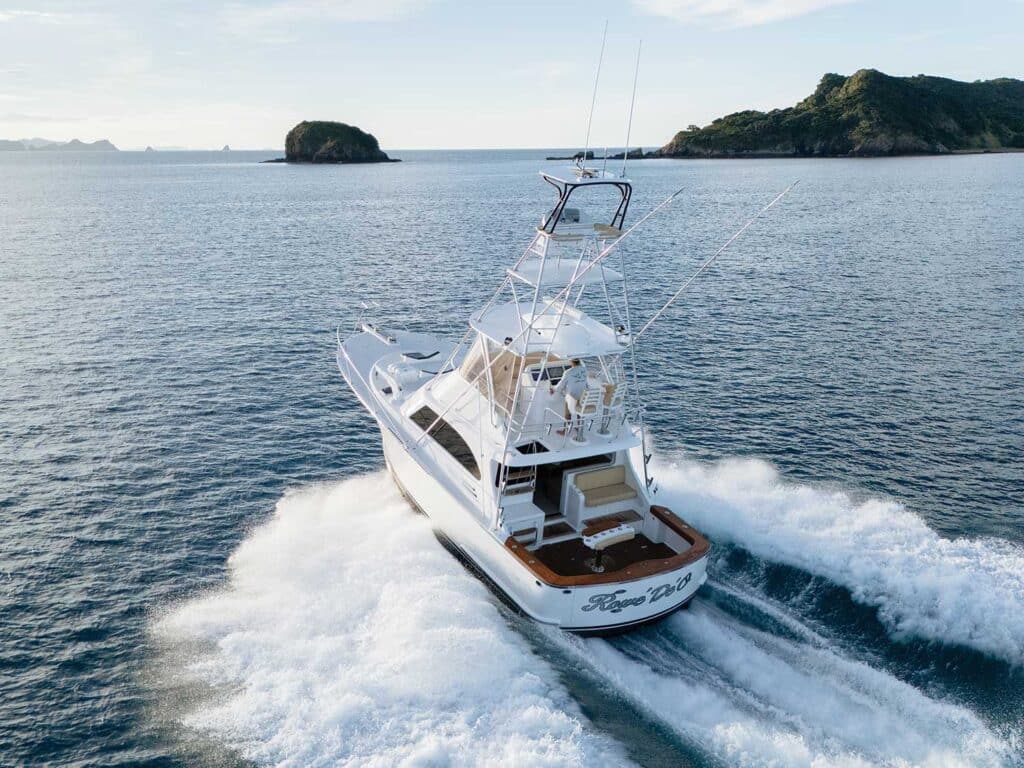
The first real cultural difference became apparent at the tackle shop. Everything looked familiar—same brands, same lures, same reels. But then I hit the line section and did a double take. The shelves were packed with IGFA-rated mono. Back in the States, you’ve got to call in favors or dig through a warehouse to get that stuff. In fact, I’d begged Bill Buckland at Fisherman’s Center to get me a few spools of IGFA-rated Momoi before I left. In New Zealand? It’s just sitting there like a loaf of bread. That’s when I realized how deep the light-tackle culture runs here. The lighter the tackle, the higher the prestige of your catch—and the higher your standing in your fishing club. And make no mistake, the clubs here still matter in New Zealand. A lot.
We rolled into the coastal town of Opua and met up with Charlotte and Brad Rowe, the duo behind Bluefix Boatworks. These guys are building fishing weapons—sleek, high-performance custom sport-fishers under the North Cape brand with the rare ability to reverse at 10-plus knots. They’re aiming to fill the niche G&S left behind, and having fished both builds, I can confidently say that the baton has been passed.
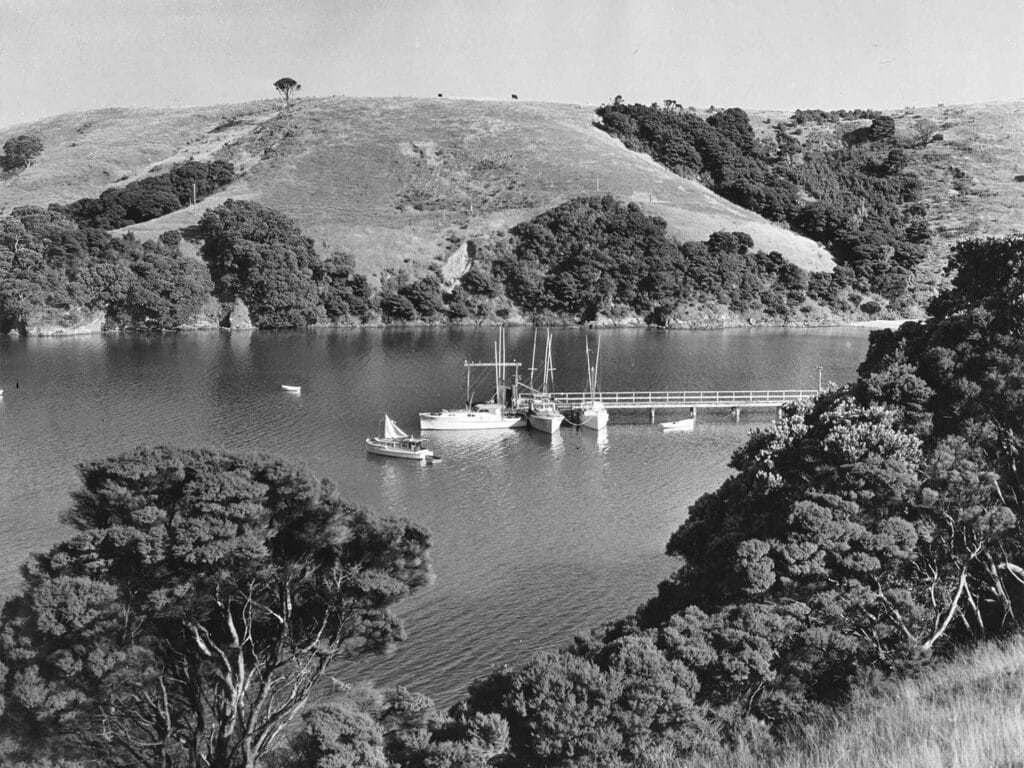
That afternoon, we got on the Rowe De’O—a newly splashed 43-foot North Cape that will be Brad and Charlotte’s personal boat—and began dialing in gear. The weather forecast was shifting, and with my limited window in New Zealand, our plan to run 350 miles out to the Whanganella Banks for striped marlin was unfortunately scrapped. Instead, we’d creep up the northeast coast of the North Island, targeting swords on 8- and 12-pound mono and casting flies to stripeys on 8-pound tippet. We weren’t looking for numbers—we were looking for one fish. That’s all it takes when the goal is records.
As we were leaving the dock, Brad’s son, Charley, and his buddy pulled up in their 16-foot tinny, fresh from an afternoon offshore. These kids couldn’t have been older than 15. They tied up, shook our hands, unloaded a solid yellowtail (kingfish), and gave us the report like a couple of old salts. The level of independence and trust Kiwi kids are given is something to admire. Add in the fact that nothing on the land in New Zealand can bite or sting you (simply amazing to someone raised in the southern US), and I couldn’t help but think how amazing it would be as a kid growing up in this outdoor paradise.
Now approaching the 40-hour mark since I last slept, Gary, JB and I grabbed a quick dinner at a lovely Thai place, where I painfully underestimated the spice scale, and then settled into our accommodations for the night at Admiral’s Cove.
What a day. It was still hard to believe that I was actually here. As I laid my head on my pillow, with sleep approaching fast, I smiled contently. Could this place really be as awesome as I dreamed it would be?
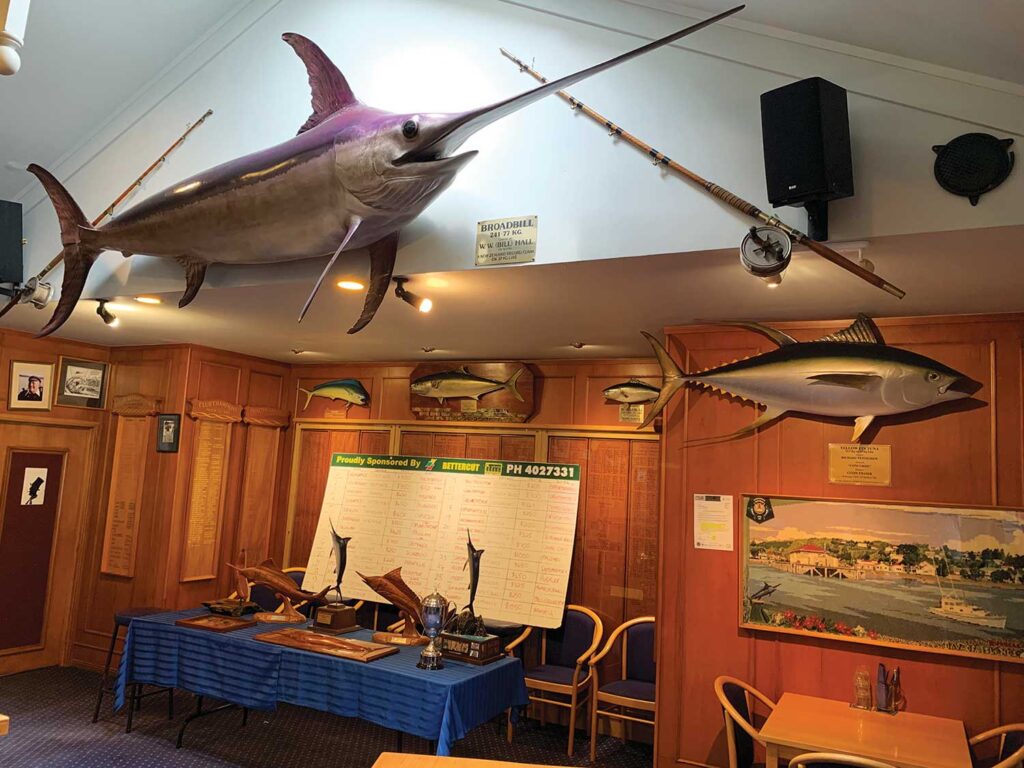
Bay of Islands to Whangaroa
We spent two days dropping baits for broadbill off Bay of Islands. It’s a legendary patch of water—alive with history and fish. We hit it hard, doing dozens of drops a day to 2,000 feet, and came up empty. That’s how it goes sometimes. But we were in motion, heading north between drops, so when we pulled the gear that second day, we were already near Whangaroa.
We slipped into the harbor at dusk, guided by cliffs marked with old World War II turrets. We tied off and ate dinner at the Whangaroa Big Game Fishing Club—steak frites and cold drinks—surrounded by old mounts and club legends frozen in time. The club scene in New Zealand is legit, and this vibe was replicated at each of the three clubs I visited during my trip. Solid choices on the menus, full bars, incredible angling history and memorabilia on the walls—who needs restaurants?
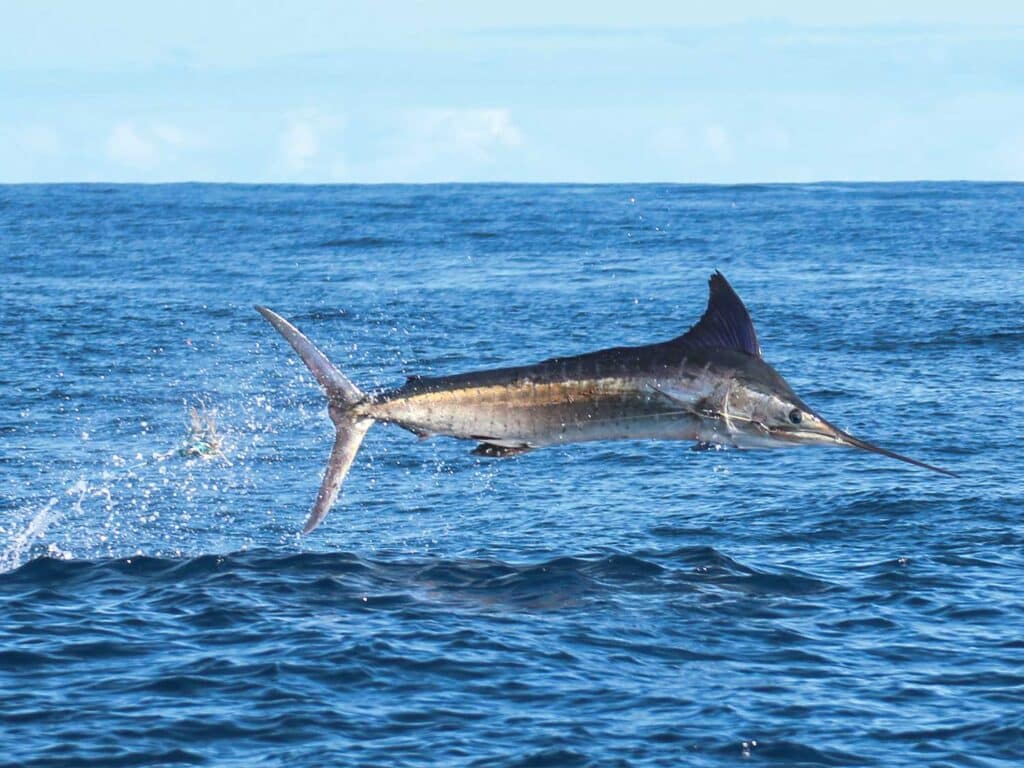
Whangaroa to Houhora
On Day Three, we pointed the bow back to the deep and hit infamous grounds such as the Garden Patch and the 505. Another dozen-plus drops in increasing seas, and no love. Not a tap. The ride to Houhora was quiet. Everyone on board was a professional and knew the game we were playing, but it was still frustrating. Record hunting can be brutal. If it were easy, it wouldn’t be worth chasing. All we wanted was a shot.
Waiting for us in Houhora was Guy Jacobsen, a light-tackle legend and longtime friend of JB’s and our veteran deckie, Brad Fergus’. Guy and his wife, Erin, hosted us on their 50-acre estate for the next few days. No exaggeration—it was paradise. We literally ate like kings. Lamb and Berkshire pork from the farm, pan-seared paua (abalone), tuatua linguine pulled from the beach, smoked marlin roe from Guy’s butchery and apple crisp from his orchard. It was an unreal experience and not a bad way to spend a few days when weathered out.
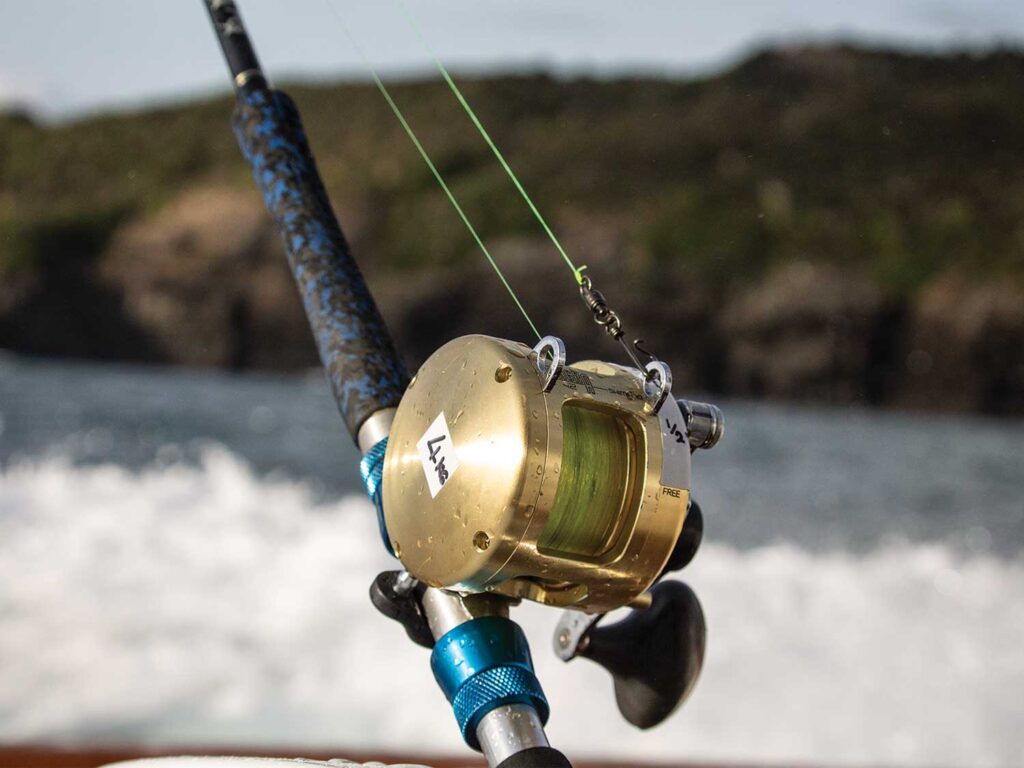
Houhora and North Cape
I woke up early the next morning to wind howling outside the window. I walked down to the marina, relieved to see JB and Brad prepping the Rowe De’O. One thing is for sure: It takes a lot for these Kiwis to stay in port. Gary and I followed their lead and slipped into our foul-weather gear as we untied.
Our target for the day? A 70-kilo striped marlin on 8-pound tippet. There had been fish around, and given the waters we were fishing, they would certainly be the right size. We just needed a shot. And after several hours and a few practice runs in the deteriorating weather, we got it.
My stare was broken by a big dorsal fin shooting up through the water behind the left short. I called it out, but the team was already in motion. Brad manned the teaser reel, and Gary grabbed his fly rod. The fish appeared again and began tracking closer to the boat behind the teaser. After another lazy bill swipe, the fish disappeared before the teaser could be pulled from the water. We all waited for it to come back, waited to get it behind the boat and then slam the boat in neutral for Gary to make his cast at it, but it never did.
We continued fishing despite the worsening conditions, energized by our first glimpse of action. Around the North Cape, it felt otherworldly. The misty cliffs stood guard like silent sentries, protecting those on land from the ocean’s wrath and casting judgment on those daring her waters.
“Here’s the thing, mate,” shouted Brad Fergus as he leaned over through the wind, rain and diesels, “fishing in New Zealand is great, but it’s f**king hard, mate, you know? You have to work for it here.”
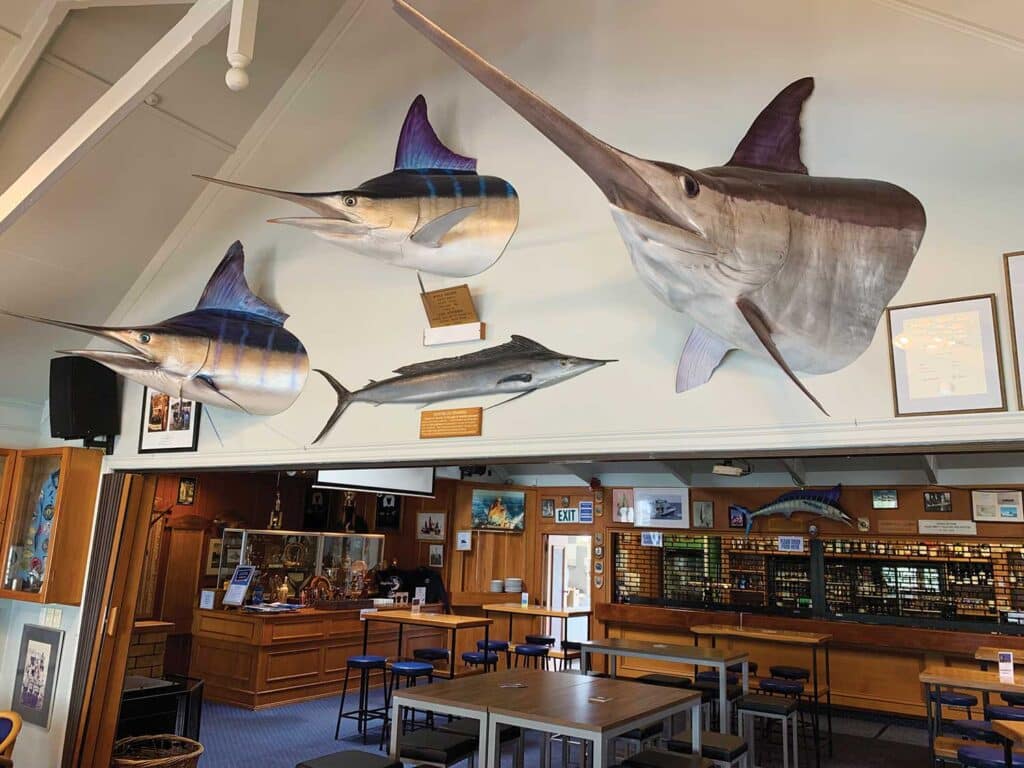
The statement wasn’t random. It had come after spending the past several days trading fishing stories from our respective travels, comparing and contrasting the locations. It was the closing argument on his pitch for New Zealand, which he felt compelled to share with me. He knew I was headed home soon and would do so without having accomplished what we came for.
I smiled big, nodded and patted his shoulder. Of course I knew. And I could not have cared less. I had done my homework. New Zealand is notoriously rough, and by no means is it known as a spot for producing crazy numbers (save the Whanganellas). But it is known for big fish. The biggest striped marlin in the world come from New Zealand, and over the past decade, more world-record swordfish have been pulled from these waters than from any other location on the planet. This place produces absolute monsters, so big that locals refer to them using vernacular I can’t even print here. Not to mention it also gets large specimens of both blue and black marlin that are almost always north of 500 pounds. New Zealand is also home to the All Tackle Pacific bluefin tuna, and fish in the 700-plus-pound range are caught every year. You don’t come here to fill your riggers. You come here to swing for the fences. And when home runs are the game, you must be willing to accept the strikeouts that come with it.
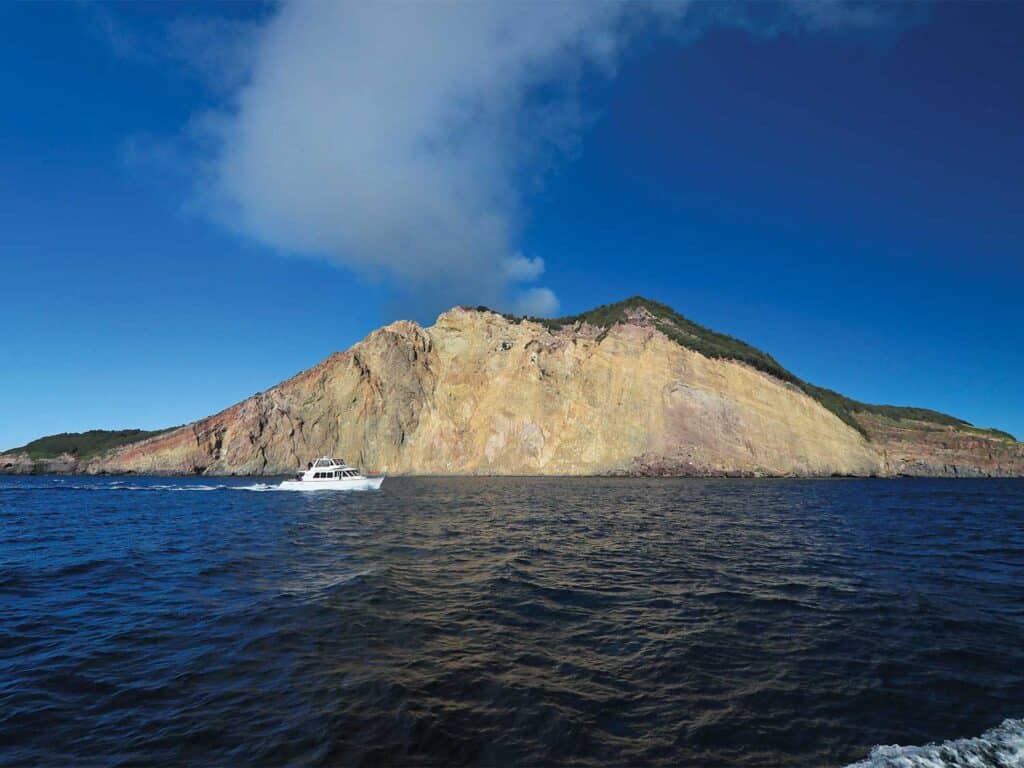
Final Thoughts
The last two days, we were weathered out—50-knot gusts and sideways rain. While unfortunate for me, the precipitation was much needed on the North Island, and we watched as it turned the arid hills lush green. We made the most of it, which is all you can do in those situations.
Our gracious hosts, Guy and Erin Jacobson, kept us well-fed and showed us the many wonders of their area. We dug up fresh clams from a local beach in gale conditions for a delicious appetizer, and toured Guy’s incredible tackle room, mount collection and fish-processing barn (trust me, you need one of these). However, the best parts of the days we spent weathered in, and perhaps the best parts of the entire trip, were the late-night conversations after dinner, where rum and red wine were shared, along with countless stories that kept every eye in the room damp, whether from laughter or tears. The amount of knowledge shared among the group was unbelievable, and it will be the inspiration of several pieces you’ll see in future issues of Marlin. To try to lump those priceless insights in this piece would be both futile and insulting.
When Gary first asked me to join him on this adventure, told me what we’d be doing and whom we’d be fishing with, I knew I had to make it happen. I had only six days. But I’ll take that every time. Chances to fish with legends in locations drenched in angling lore don’t come around all that often. What I came here for wasn’t just fish—it was the full experience. That’s exactly what I got, and I cannot wait to return.
